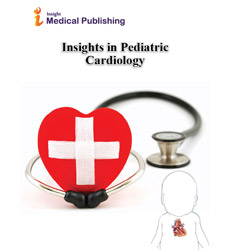Abstract
Sandiferâ??s Syndrome: Three case reports and review
Introduction: Sandifer’s syndrome (SS) was first reported in 1962 as a combination of gastroesophageal reflux disease (GERD) with spastic torticollis and dystonic body movements with or without hiatal hernia occuring in children and adolescents. Although the true pathophysiological mechanisms of the condition are still unclear , it’s hypothesised that the position of the head provides relief from acid reflux.
Case presentations: A 3 month old female infant presented to our polyclinic with dystonic episodes accompanying duration of 30s-1min during feeding associated with vomiting for 2 months. Since the patient developed regurgitations with dystonic episodes which were followed by long lasting crying attacks, the milestones of motor and mental development were normal.The EEG and MRI were normal. We had two similar cases in our polyclinic.
Conclusion: The early diagnosis and treatment of GERD in patients with SS enhance the success of medical management.In our cases to diagnose we based on typical clinical features and on response to medical treatment with antacids and prokinetics.The paroxysmal dystonic features dramatically resolved completely after anti reflux treatment in our patients.Few reports of SS exist, yet it is probably underrecognised and mistreated, it might be on the interest to the scientific community.
Keywords: Sandifer Syndrome, Gastroesophageal reflux, Dystonia
Author(s):
Ayse Pervanlar
Abstract | PDF
Share this

Google scholar citation report
Citations : 5
Insights in Pediatric Cardiology received 5 citations as per google scholar report
Insights in Pediatric Cardiology peer review process verified at publons
Abstracted/Indexed in
- Google Scholar
- Secret Search Engine Labs
Open Access Journals
- Aquaculture & Veterinary Science
- Chemistry & Chemical Sciences
- Clinical Sciences
- Engineering
- General Science
- Genetics & Molecular Biology
- Health Care & Nursing
- Immunology & Microbiology
- Materials Science
- Mathematics & Physics
- Medical Sciences
- Neurology & Psychiatry
- Oncology & Cancer Science
- Pharmaceutical Sciences

